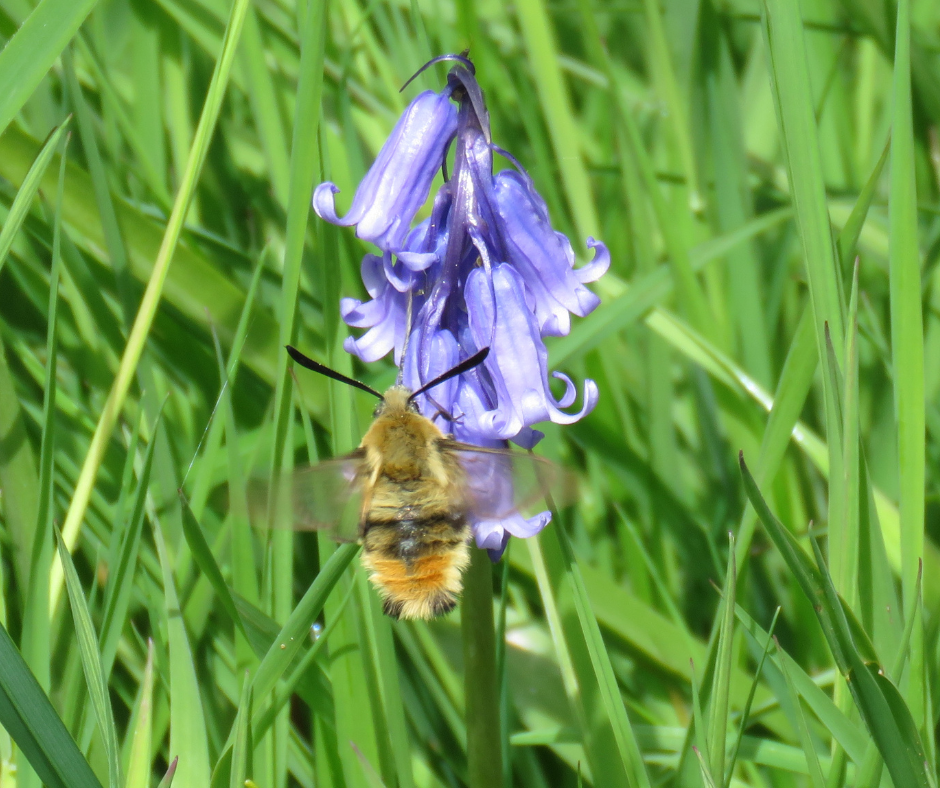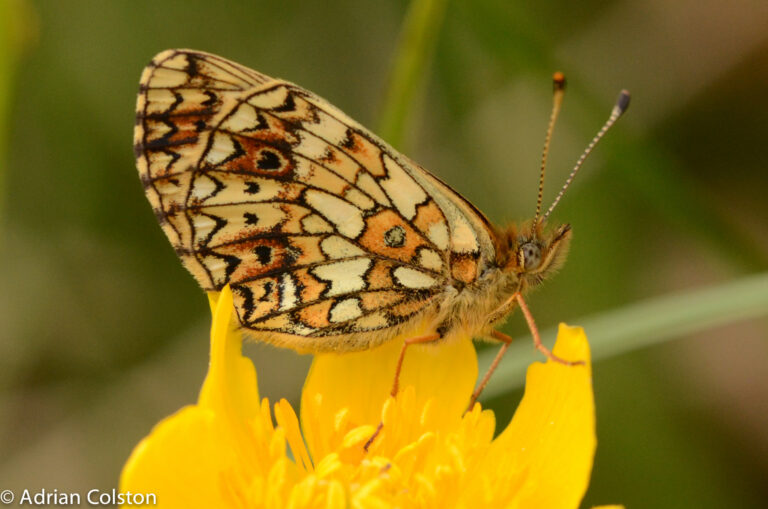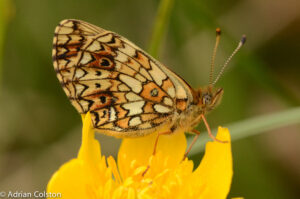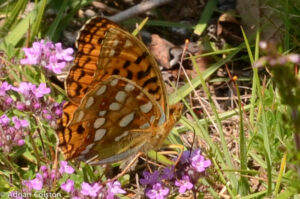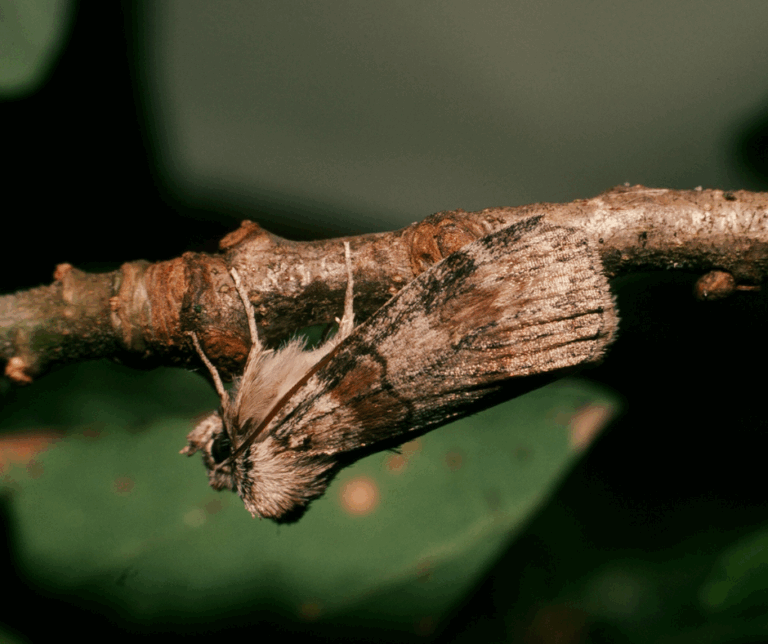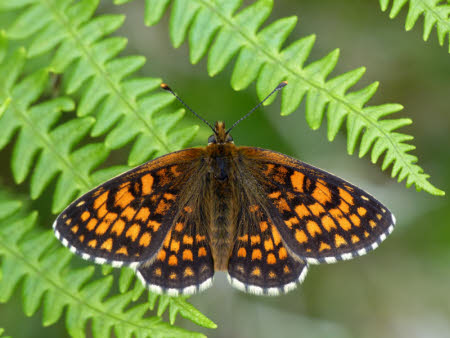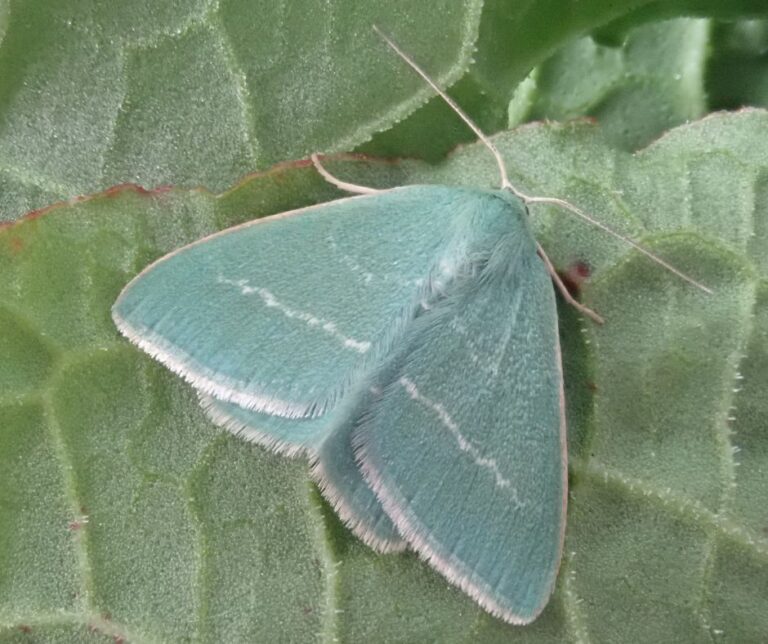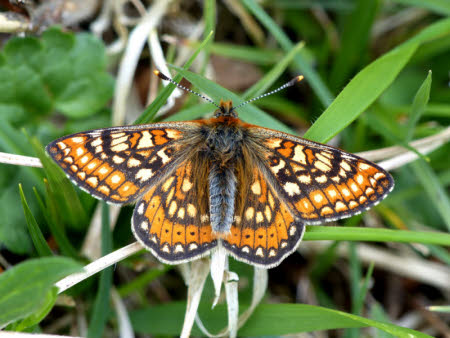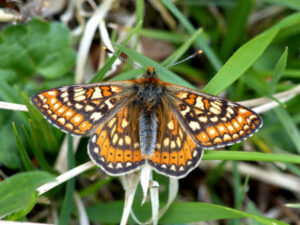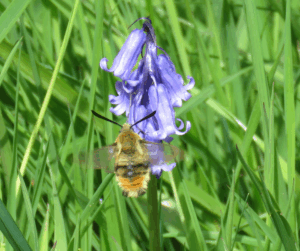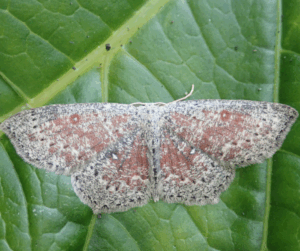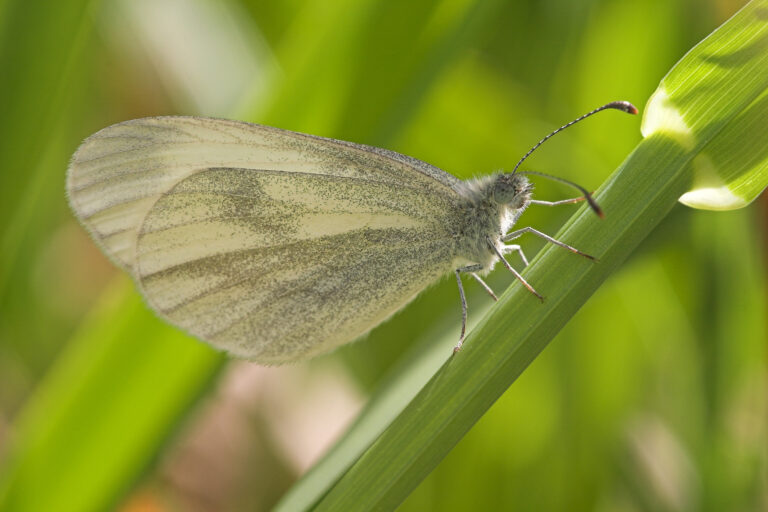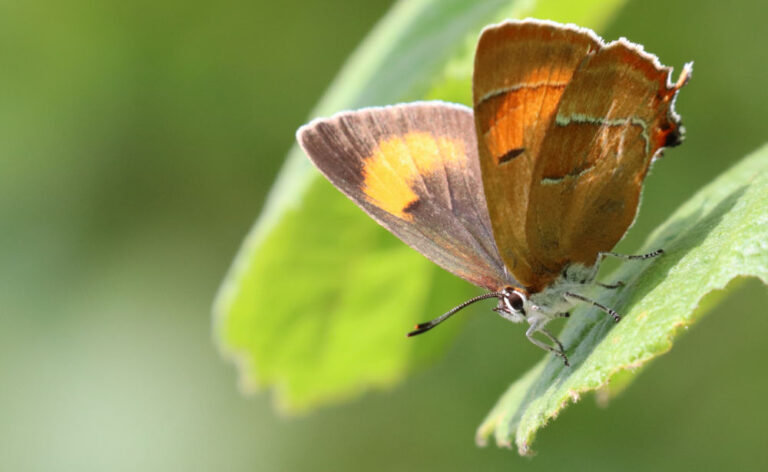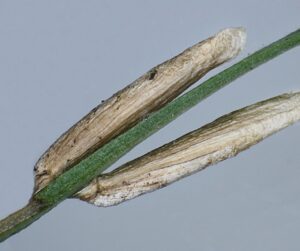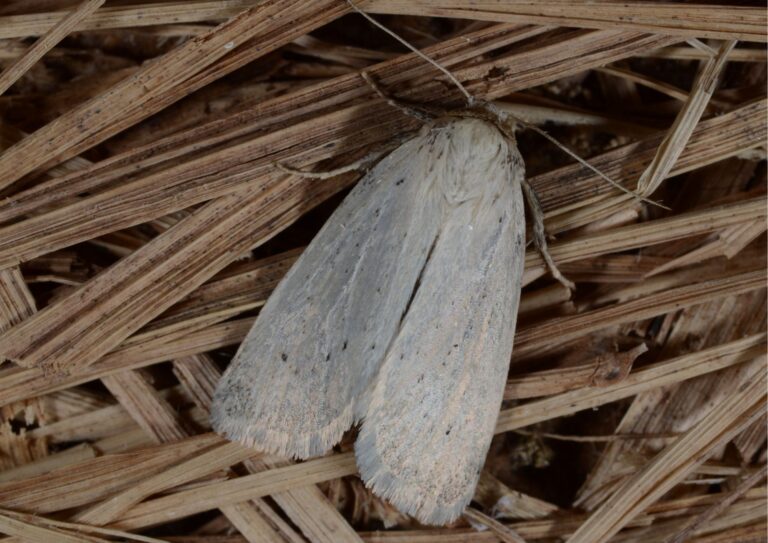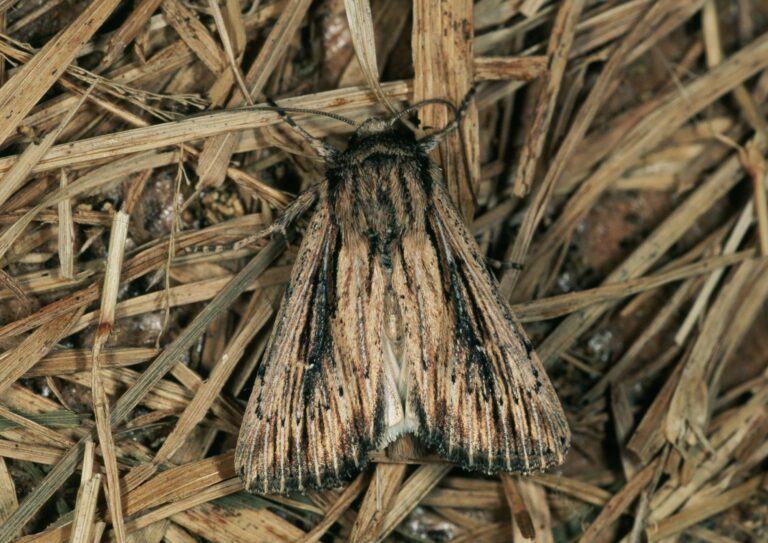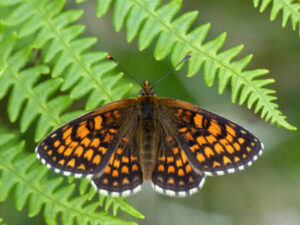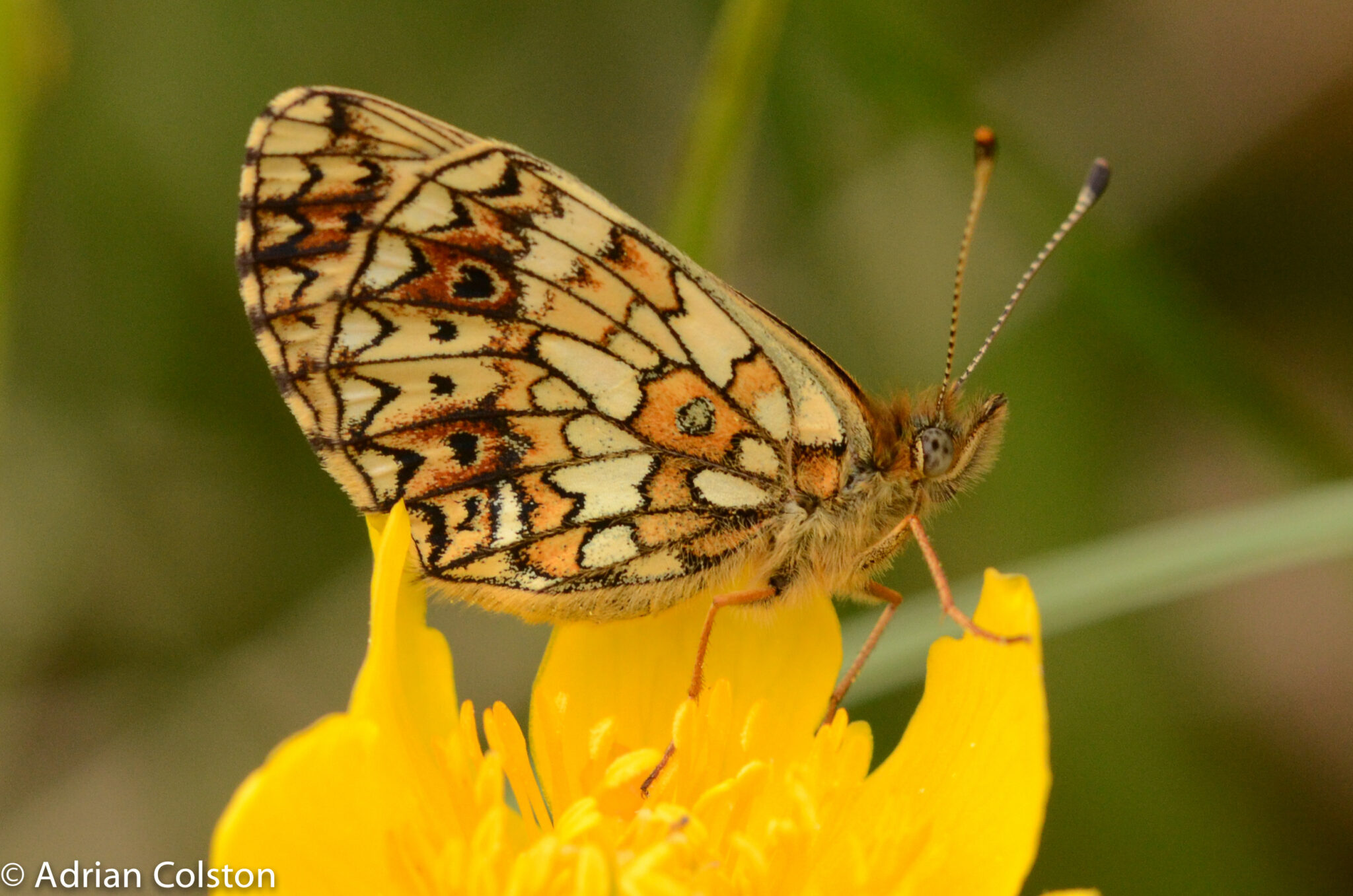Moths and butterflies bring beauty and balance to the natural world. While butterflies are often celebrated for their bright colours and elegant flight, moths are just as fascinating with their intricate patterns and unique behaviours. Both play a vital role in pollination and are an essential food source for birds, bats and other wildlife.
However, moths and butterflies are in decline and urgent action is needed. Since 1976, 80% of butterfly speciesA group of similar organisms that can breed and exchange gen... More in the UK have decreased in either abundance, distribution or both. And in the last 50 years, over two-thirds of common and widespread macro moths have declined.
Moths and butterflies are found in a wide range of Devon’s habitatsThe natural environment in which an animal, plant or other o... More, from shady woodlands to sunny limestone grasslands, but all need certain things:
- Flower-rich habitats: Adult moths and butterflies feed on nectar produced by flowers so depend on habitats with a wide range of herbaceous plants, shrubs and trees.
- Long grass: Grasses provide food and shelter for many moths and butterflies throughout the year, so uncut grass is vital for their survival.
- Caterpillar foodplants: Some species require a specific foodplant, and if this is rare then the moth or butterfly will be too. For example, white admiral caterpillars feed on honeysuckle in woodlands while the narrow-bordered bee hawk-moth feeds on devil’s bit scabious, found in flower rich acidic wet grasslands. Many common garden butterflies, such as the peacock, red admiral and comma, only feed on nettles.
- Shelter: Moths and butterflies overwinter and pupate in sheltered spots such as grass tussocks, scrubLand with thick vegetation that includes wildflowers, grasse... More, trees, buildings and soil. Some caterpillars burrow into soil to pupate while others fix onto plants using a cocoon, which can cover entire bushes. A few species, such as the silver-studded blue, are taken by ants into their nests where they’re ‘farmed’ to excrete sugars for the ants and in turn are protected until they pupate.
- Connectivity: A network of connected flower-rich habitats (meadows, hedgerow corridors, woodlands and gardens) is critical as populations that live in isolated habitats are far more likely to die out. Different species travel different distances to find habitats. For example, wood whites are weak fliers and need continuous habitatThe natural environment in which an animal, plant or other o... More or gaps of no more than 500 metres while the high brown fritillary can travel xxx kilometres.
Moths in Devon
1,398 of the UK’s 2,500 breeding moth species are found in Devon. xxx are listed as Devon Species of Conservation Concern and xxx of these are listed as Devon Special SpeciesLorem ipsum dolor sit amet consectetur adipiscing..
Butterflies in Devon
39 of the UK’s 59 butterfly species are found in Devon. 13 are listed as Devon Species of Conservation Concern and seven of these are Devon Special Species.

